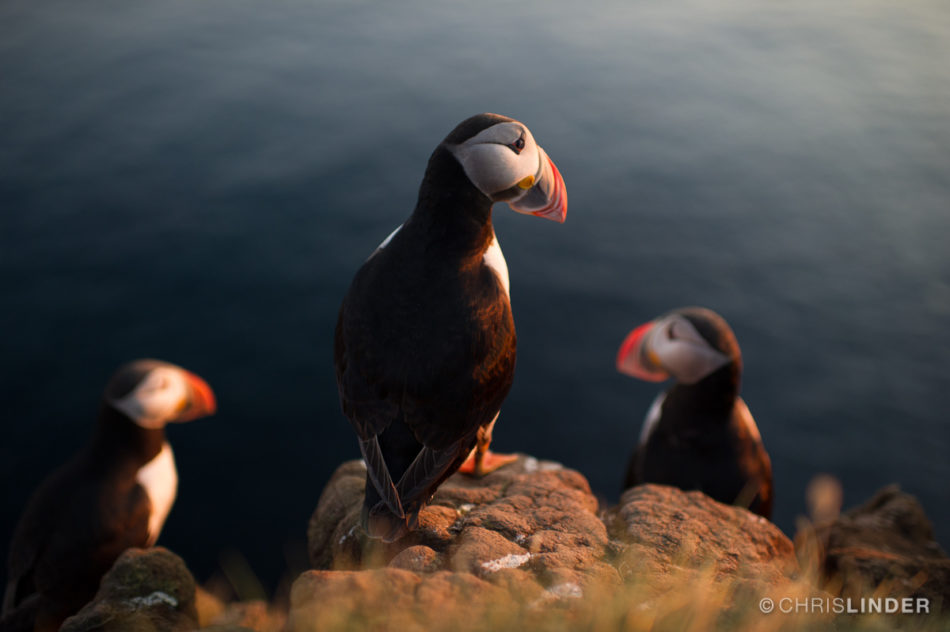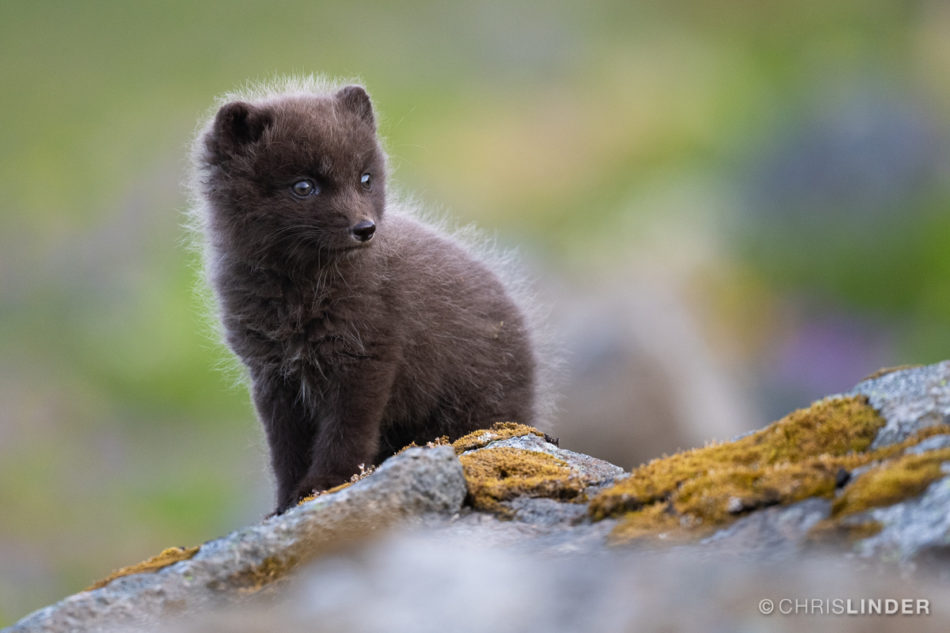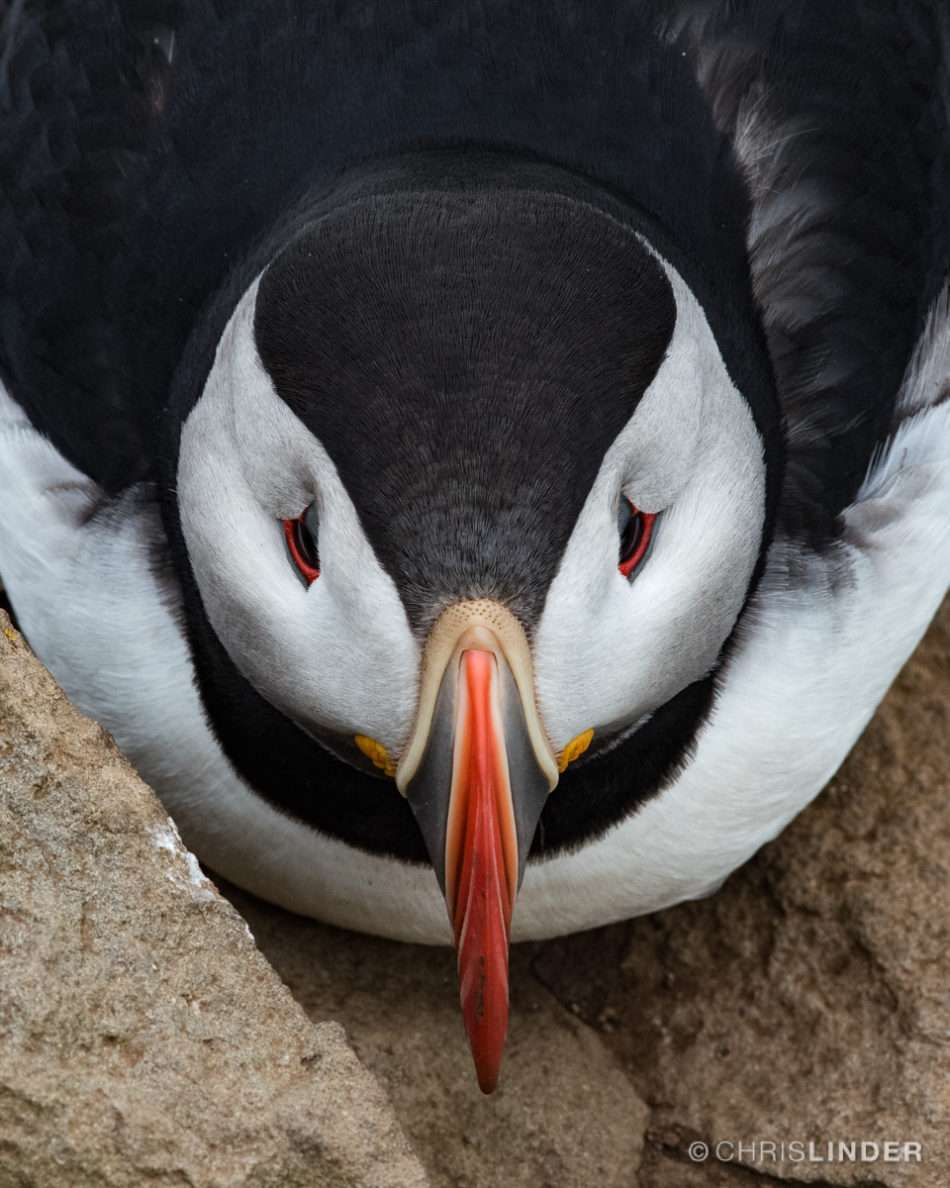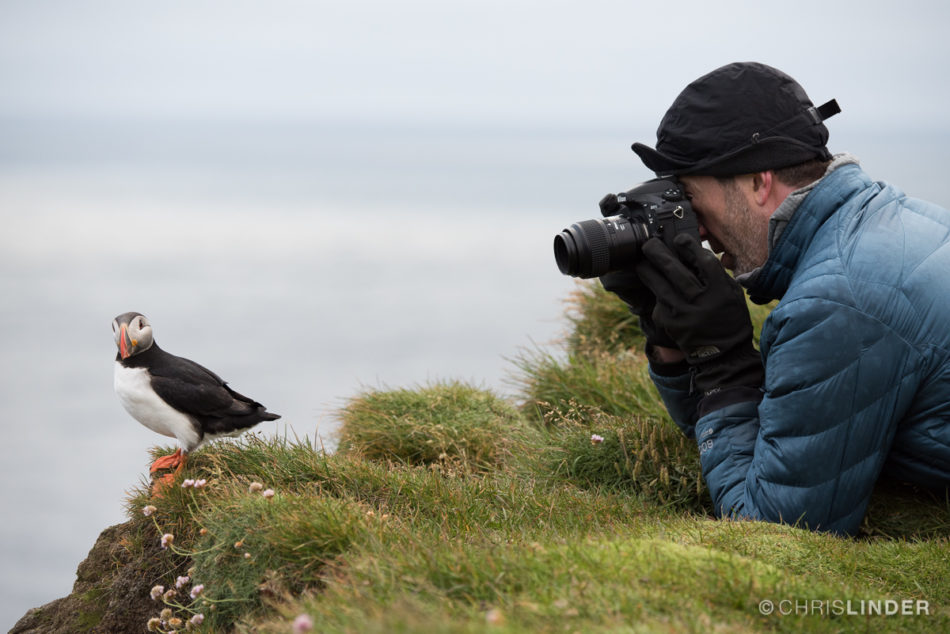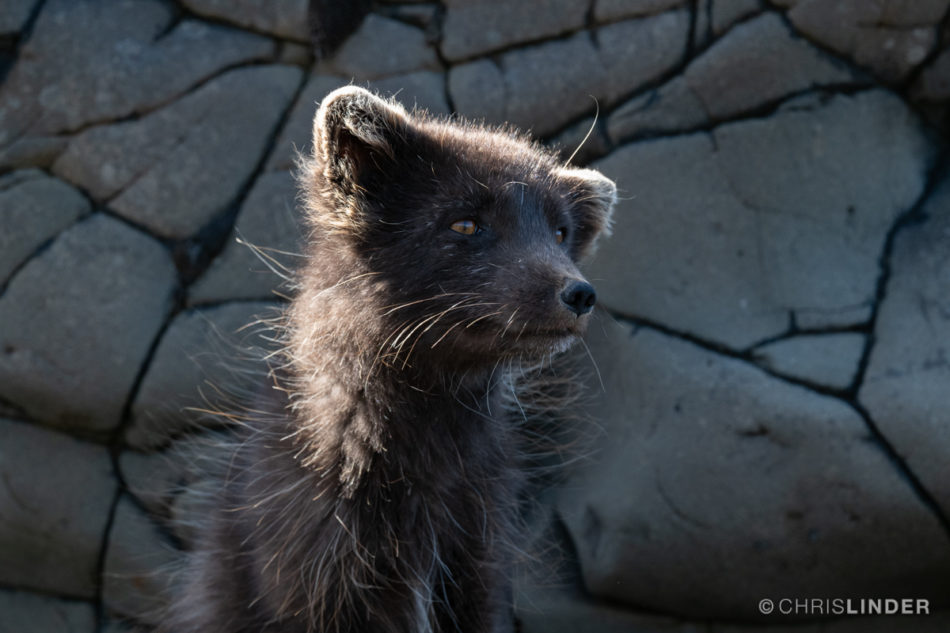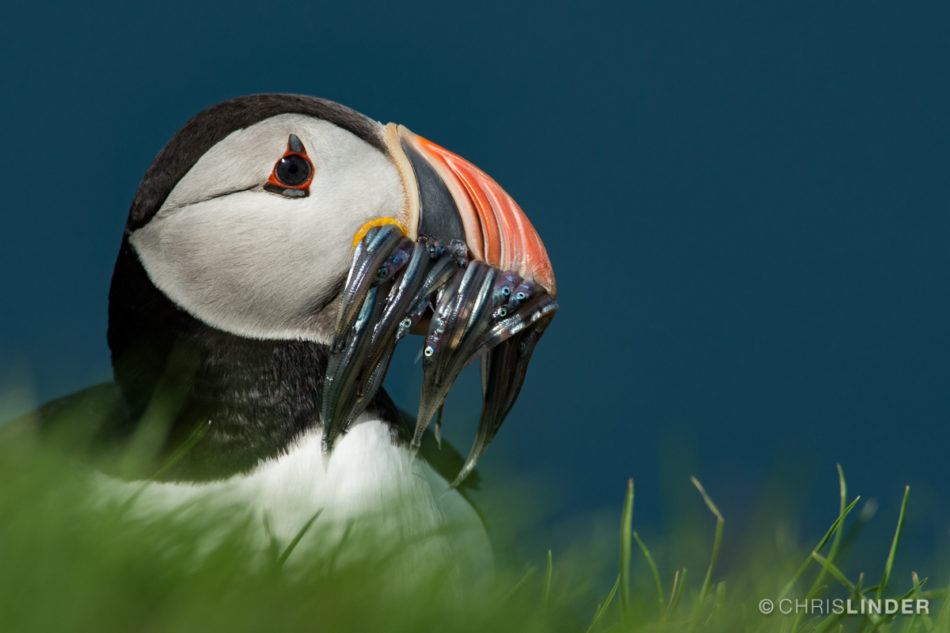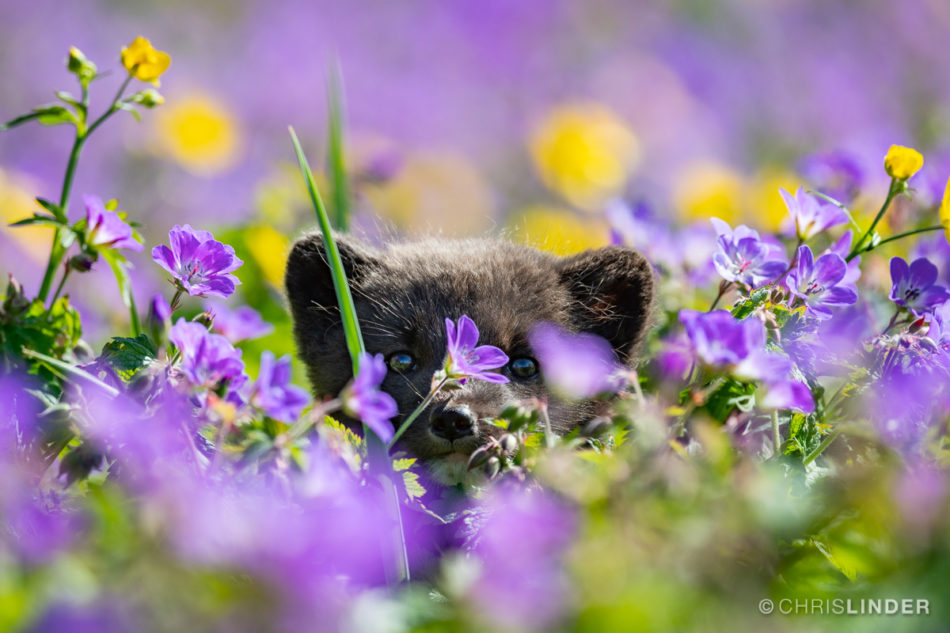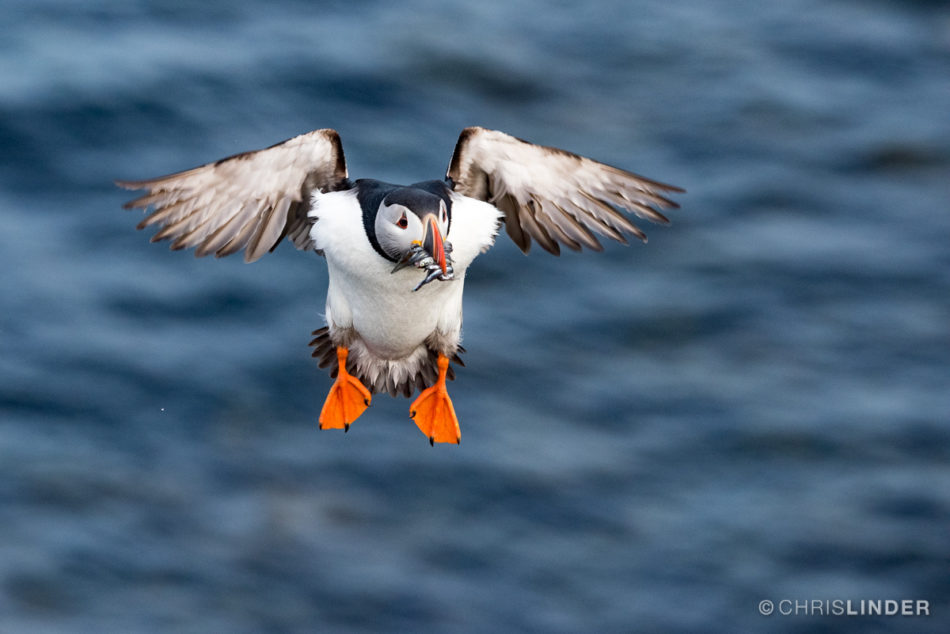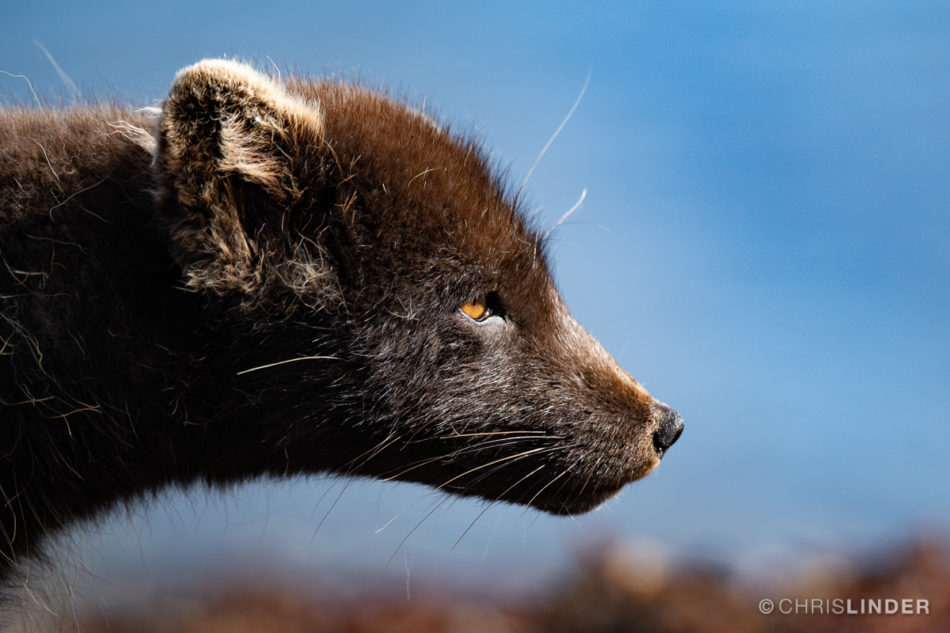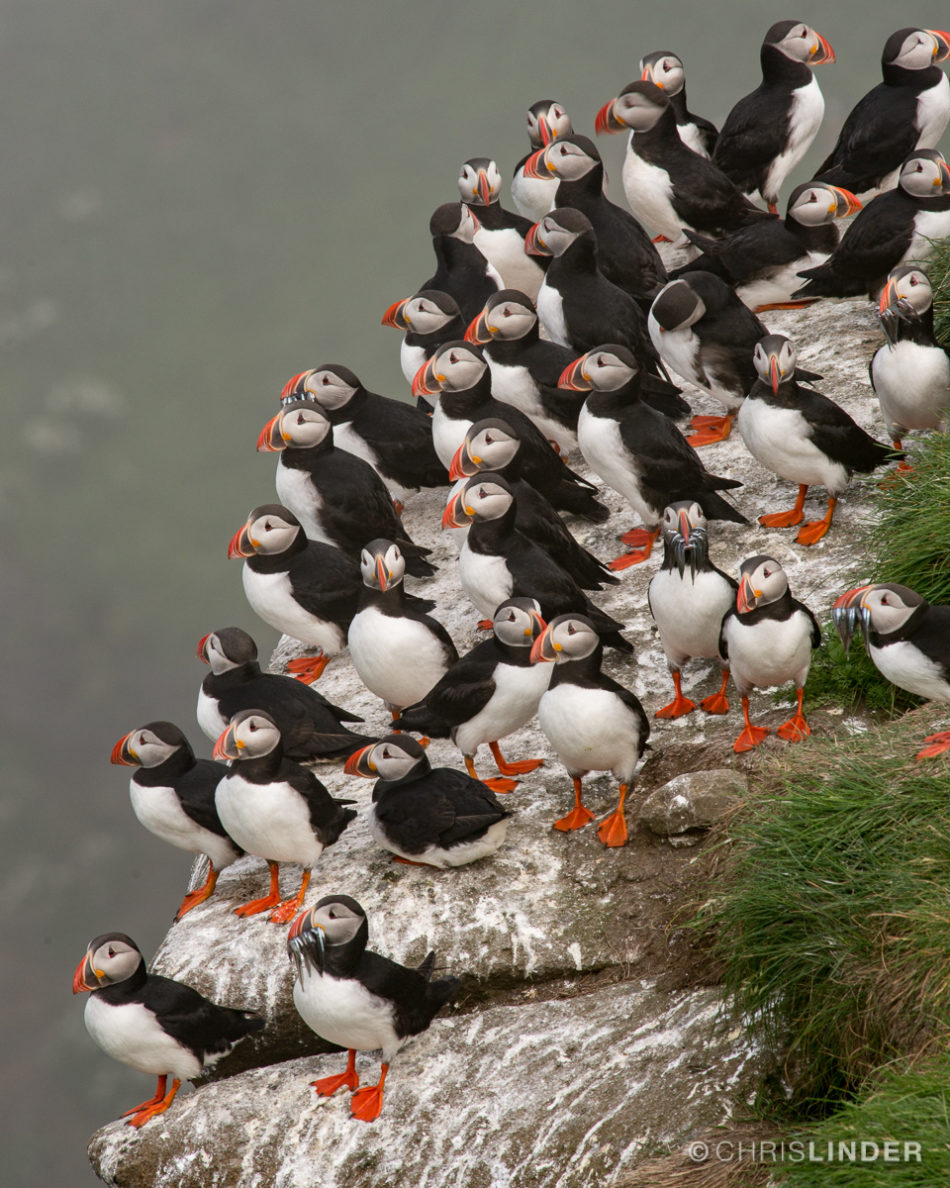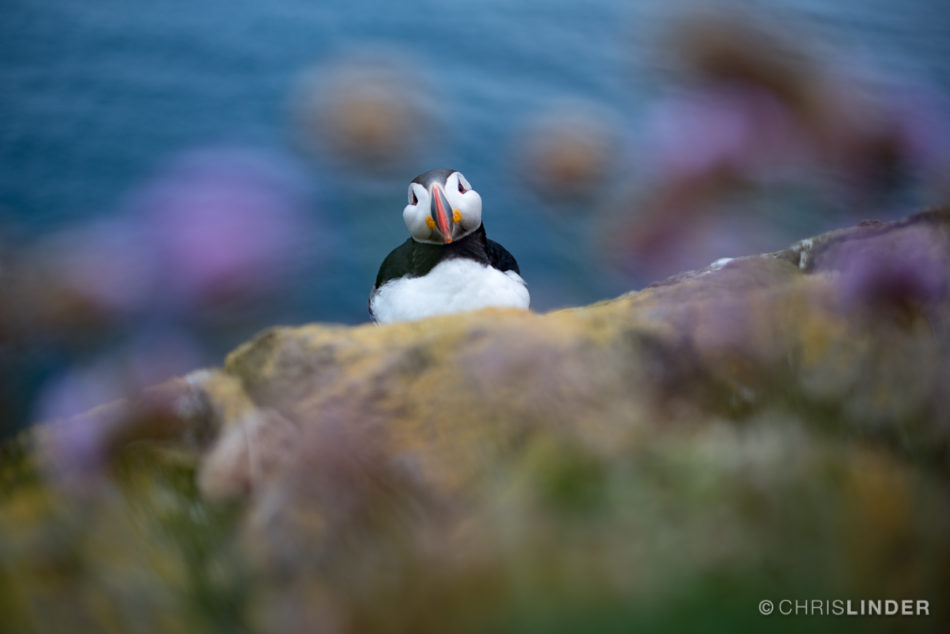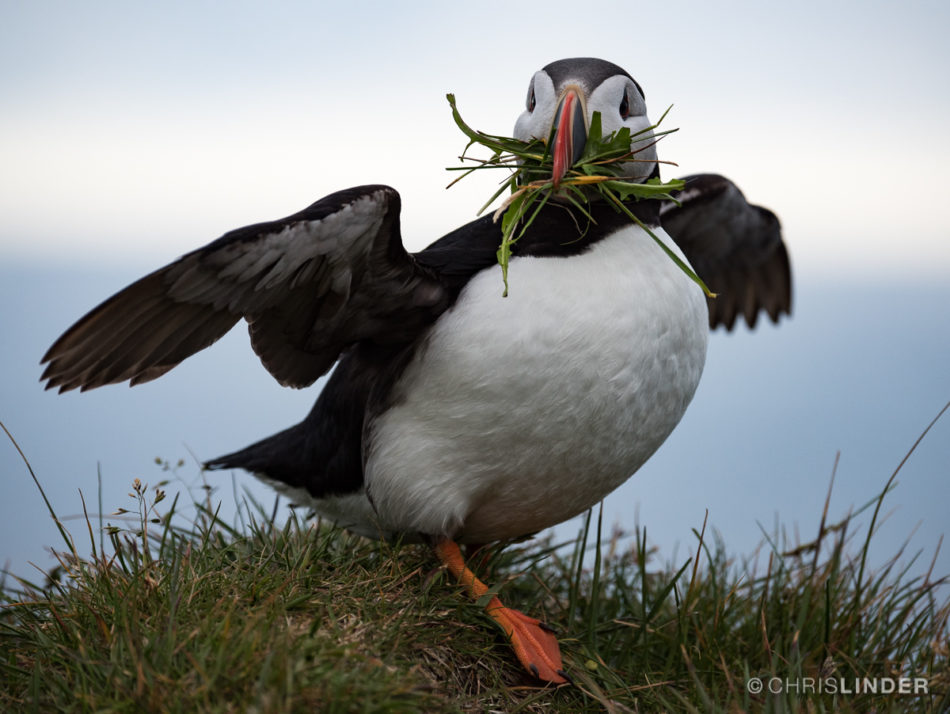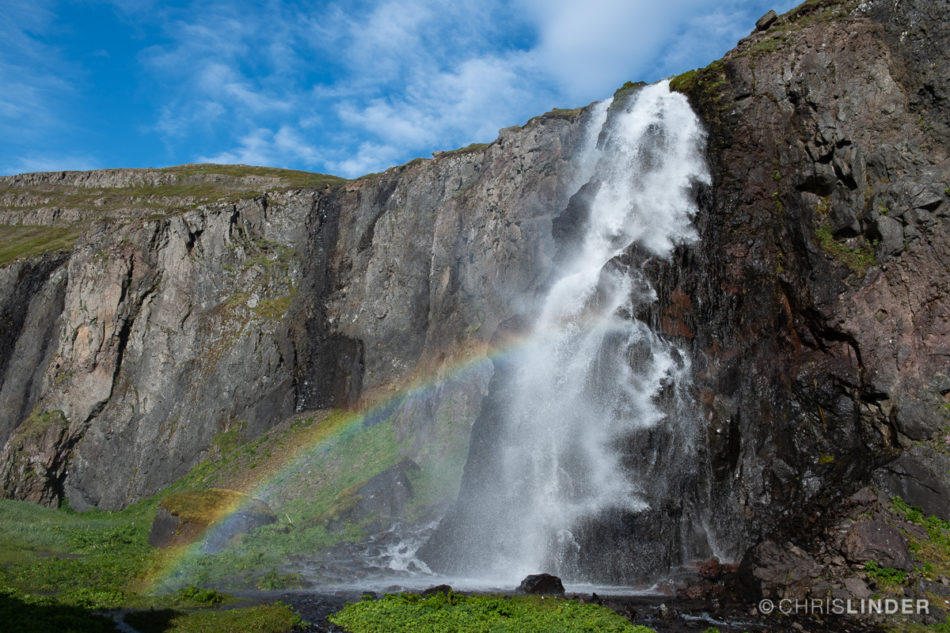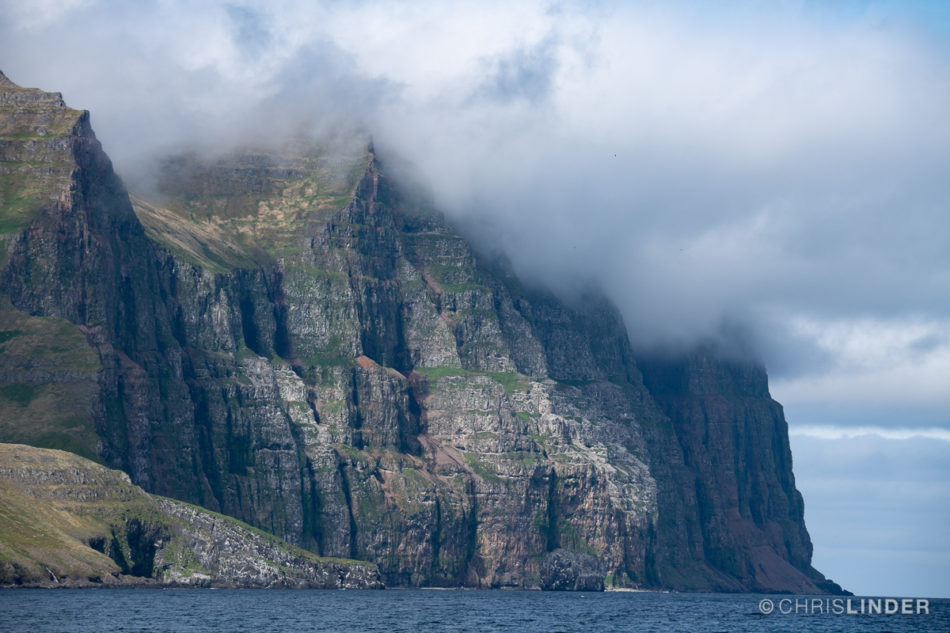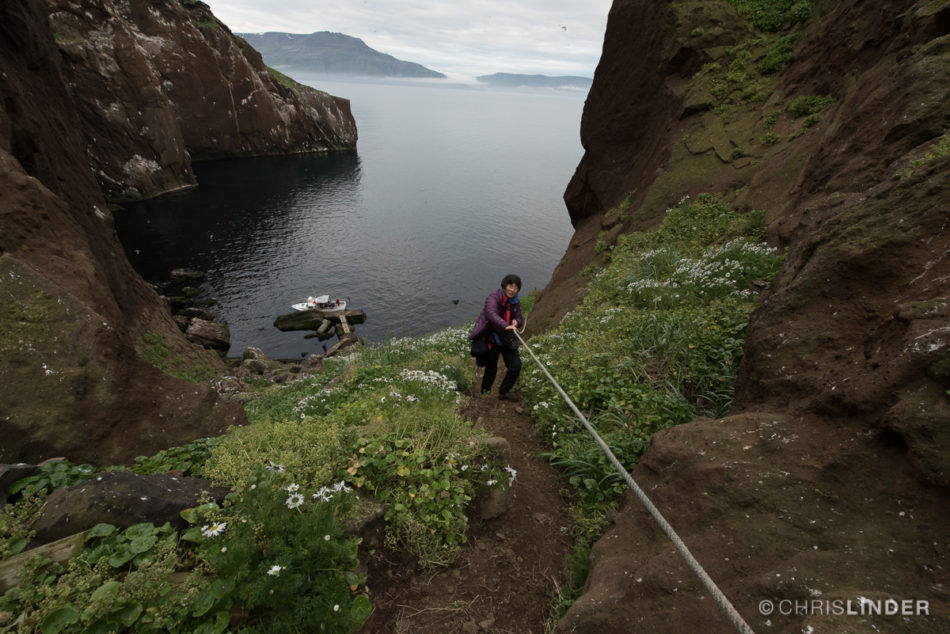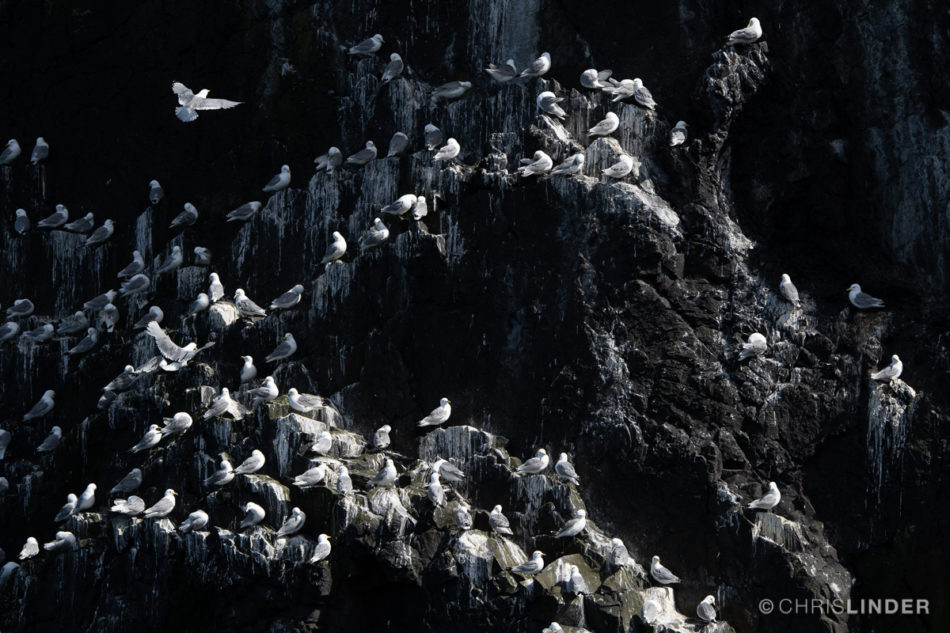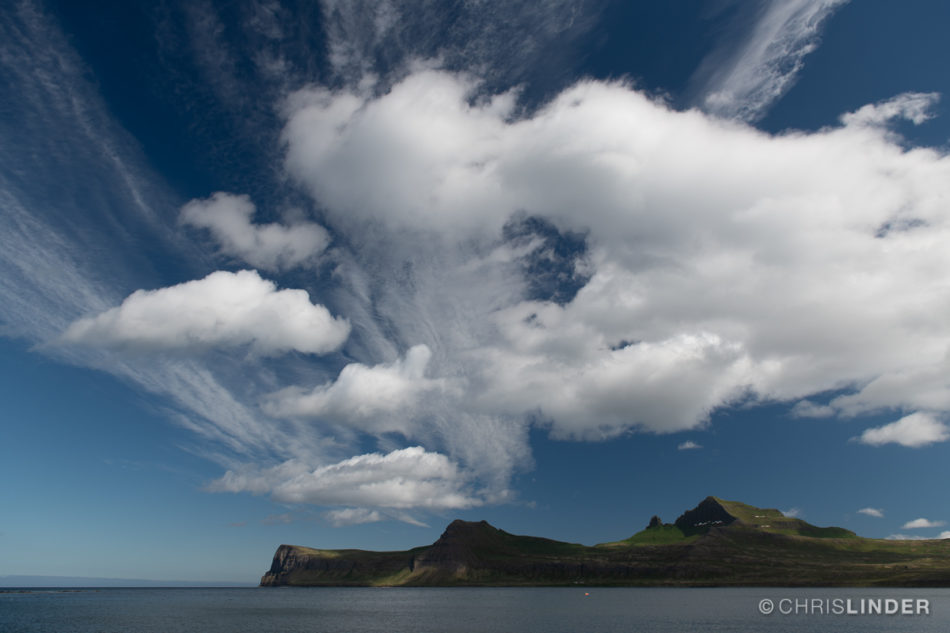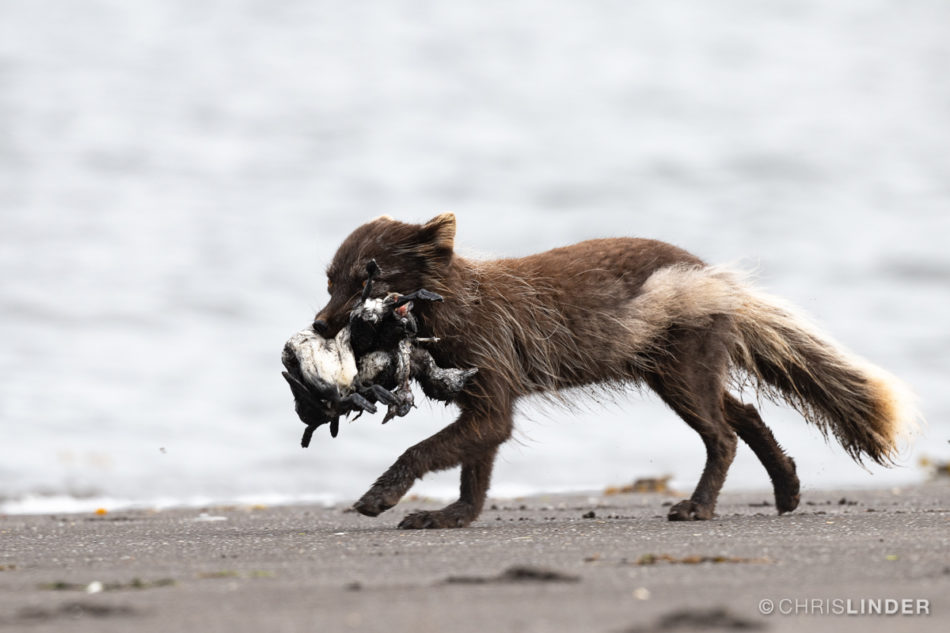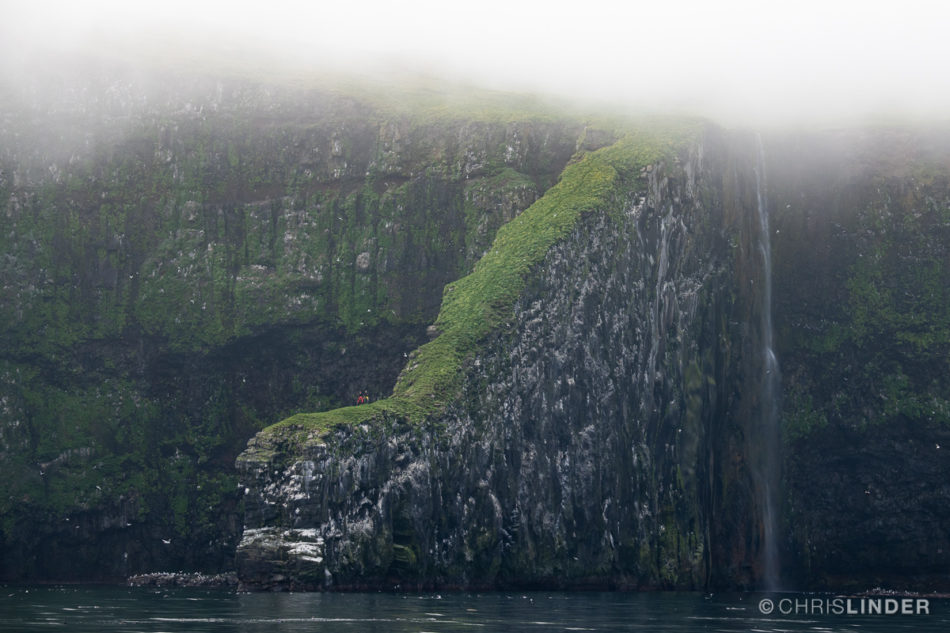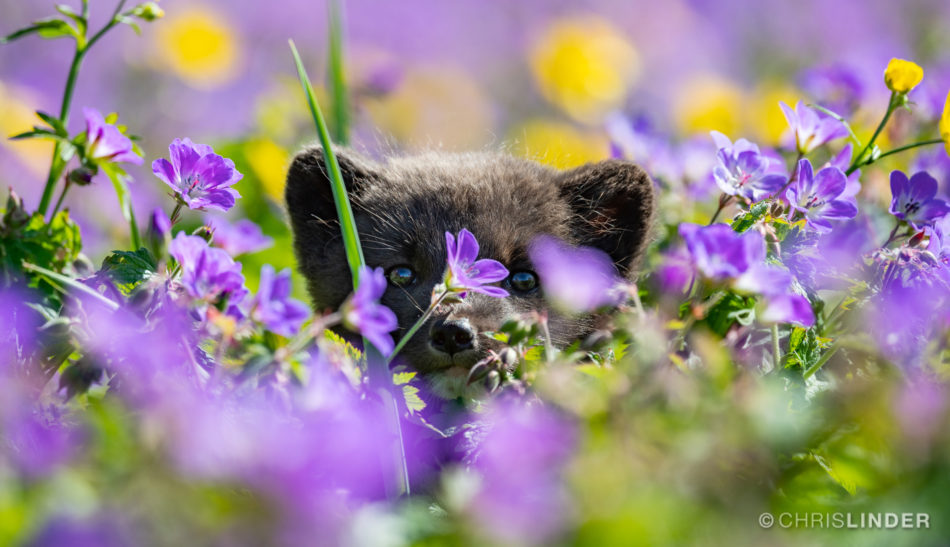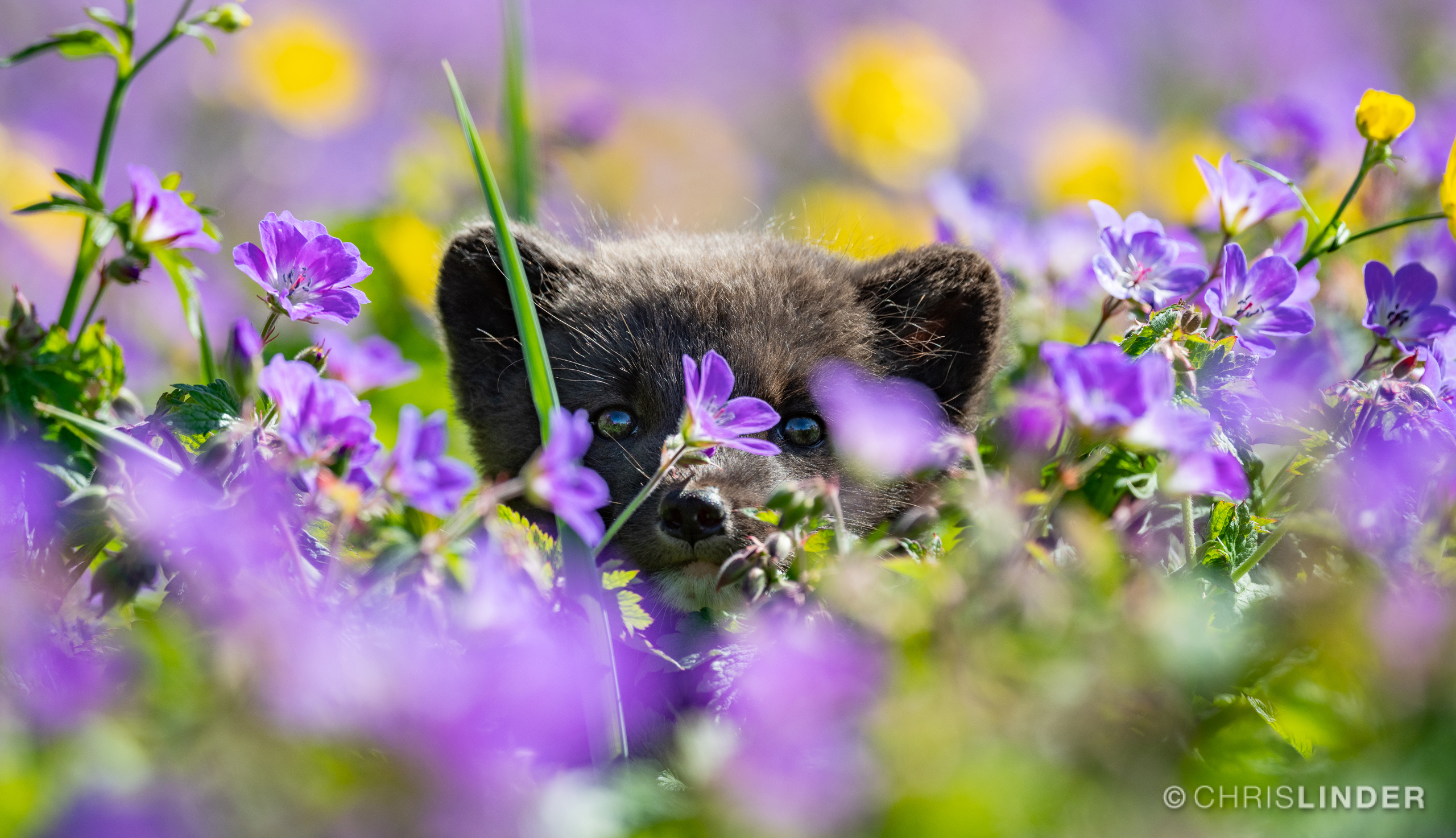
Arctic Foxes and Puffins
Overview
Join award-winning conservation photographer Chris Linder for a small-group wildlife photography workshop focused on Iceland’s most charismatic species: Atlantic puffin and arctic fox. The trip includes stops at some of the best locations for wildlife photography in Iceland, including the largest bird cliff in Europe, and the remote, roadless Hornstrandir Nature Reserve.
Hornstrandir is a 220 square mile expanse of glacially-carved valleys, towering sea cliffs, wildflower meadows, legions of seabirds, and Iceland’s only native terrestrial mammal, the arctic fox. With its rounded ears, thick fur, and shortened legs and snout, the arctic fox is supremely adapted to an unforgiving climate. Since the island’s settlement over a thousand years ago, Icelanders have hunted this small (less than 10 pound) carnivore, at first for its fur and later to protect lambs and other livestock. Hornstrandir is one of the few regions in the country where the fox is fully protected from hunting, so they have little fear of humans. Their innate curiosity often leads to close encounters with hikers and campers.
This workshop has been deliberately capped at four photographers, providing a more private and comfortable experience. The itinerary has been carefully crafted based on Chris’s previous assignments photographing puffin research with Icelandic scientists. The trip is timed for the best chance at photographs of puffins carrying sand-eels back to their burrows, as well as the emergence of the curious young fox kits from their dens.
The focus of this expedition is photography in the field. Chris will provide generous hands-on mentorship, sharing his expertise and professional insights on developing creativity and personal vision, composition, working with various qualities of light and changing weather, and working landscape scenarios to best effect. Chris has spent months in the field photographing seabirds, resulting in numerous accolades, including winning three categories of the Nature’s Best Photography Windland Smith Rice International awards: Conservation Story (2019), Birds (2015), and Indigenous Cultures (2009). His knowledge of bird behavior and enthusiastic teaching style will help you to get the best possible shots.
Constructive critiques will be included in the schedule when time allows to help participants identify where they are succeeding and how they might focus their energies to advance their vision and skills. During critiques, emphasis is first placed on identifying what participants are doing right with regard to chosen subject and composition, followed by discussion of ways to improve the execution of the image in light of the emotional response, concepts, and aesthetics that led the photographer to make the image in the first place.
Itinerary
July 9th – ARRIVAL DAY IN REYKJAVIK
Fly in to Keflavik International Airport (KEF), where a driver will meet you and transfer you to Reykjavik’s Hotel Holt. During the afternoon, there will be group introductions and orientation in the hotel’s lobby. Our first dinner as a group will be held at one of our favorite restaurants in Reykjavik.
Overnight Hotel Holt (D)
July 10: FLATEY
After breakfast at Hotel Holt, we will drive north to the town of Stykkishólmur, where we will board the Baldur ferry bound for the island of Flatey. Flatey is a tranquil island in the large bay of Breiðafjörður. No vehicles are allowed on the island, so we will disembark with just our camera gear and any clothing and toiletries needed to spend the night at the historic Hotel Flatey. After dinner we will photograph puffins, Arctic terns, and other seabirds at the cliffs just a few minutes’ walk from the hotel.
Overnight Hotel Flatey (B, L, D)
July 11: LÁTRABJARG BIRD CLIFFS
After breakfast at Hotel Flatey, we will resume the ferry journey northward, pick up our van and drive to the very western tip of the Westfjords peninsula. Our destination here is the world-famous Látrabjarg bird cliffs. Stretching for 8.4 miles and reaching a height of over 1,400 feet, this is the largest bird cliff in Europe. Millions of puffins, guillemots, and razorbills nest here, and we will take our time to wait for the right light and weather to make the best possible seabird portraits and capture their unique behaviors. In mid-July, puffins will be bringing sand eels back to their pufflings in their burrow nests. Access is easy here; the parking lot is a 5-minute walk from the nearest cliff view. Unlike many other areas in Iceland, puffins were never hunted here so they are quite habituated to human visitors.
Overnight Breidavik Hotel (B,L,D)
July 12: DYNJANDI WATERFALL AND WESTFJORDS
Today we will drive (3 hours) along picturesque fjords and over mountain passes to the town of Ísafjörður, the capital of the Westfjords. We will make several stops for photography along the way including the massive 330-foot Dynjandi waterfall.
Overnight Hotel Horn (Ísafjörður) (B,L,D)
July 13-17: HORNVIK BAY – HOME OF THE ARCTIC FOX
On the morning of the 13th, we will board a Borea Adventures boat for the 2 ½ hour ride to our main destination: Hornvik Bay in the Hornstrandir Nature Reserve. This idyllic north-facing bay is encircled by massive bird cliffs and boasts the largest density of denning arctic fox in Iceland. During this time of year, the fox kits are just starting to emerge from the dens and explore their environment. The fox parents are extremely active, hunting for seabirds and foraging for carrion, and frequently run right through the camp. We will explore a number of locations in the bay, either on foot or shuttled via zodiac. In addition to the wildlife, we will be able to photograph fields of wildflowers, waterfalls, and mountain landscapes. Our five nights here will seem to pass in a flash. For details on the Borea camp, please refer to the accommodations and packing section.
Overnight 5 nights at Borea Adventures Hornvik camp (B, L, D)
July 18: RETURN TO ÍSAFJÖRÐUR
Today we pack up our gear and return to civilization, where we can take an hour-long shower and catch up on email, downloads, gear maintenance, and sleep at the idyllic farm retreat Heydalur.
Overnight Heydalur (B,L,D)
July 19: DRANGEY
On the 19th, we will drive east out of the Westfjords to the town of Sauðárkrókur. After getting settled in the hotel and having lunch, we will finish our photography adventure with an evening trip to the island of Drangey. This imposing sea stack in Skagafjörður bay is covered with seabirds and one of the most dramatic places to make photographs of large groups of puffins both in flight and resting on the cliffs.
Overnight Hotel Tindastoll, Sauðárkrókur (B, L, D)
July 20: RETURN TO KEFLAVIK
Today we drive back to Keflavik (5 hour drive) and get our rapid COVID tests are required by the US government. We will check in to the Hotel Berg and gather for a last celebratory dinner and slideshow together.
Overnight Hotel Berg (B, L, D)
July 21: DEPARTURE DAY
Transfer provided by Hotel Berg to Keflavik airport. (B)
Instructors
Chris Linder
- Chris Linder is an award-winning professional photographer, filmmaker, workshop leader, and lecturer. Chris earned a master’s degree in oceanography from the Massachusetts Institute of Technology and the Woods ...
Pricing
PRICING AND OCCUPANCY
All costs are per person
For the time-being, we are not paring up individual travelers in double-occupancy. Individual travelers must book at the Single-Occupancy rate.
PAYMENT POLICIES
- 50% deposit upon booking
- 50% final payment due March 11, 2022
Please note that due to significant financial commitments required to offer this unique expedition, all payments are non-refundable and non-transferable. If the expedition is sold out as of the start date, refunds for cancellations will be offered as a courtesy. All other terms and conditions apply. Please review our terms and conditions even if you have participated in previous Visionary Wild trips so that you are aware of current policies
INCLUDED
- Photographic instruction throughout by Chris Linder
- All ground transfers
- Twelve nights lodging
- All meals and beverages (including wine and beer with dinner) from dinner on July 9 to breakfast on July 21.
- Group transportation
- Expert guides
NOT INCLUDED
- R/T airfare to and from our starting and ending point at Keflavik Airport, Iceland
- Additional hotel nights, meals or other costs for arrivals prior to the start date or departures after the end date
- Cost of passports, any necessary entry visas or reciprocity fees, vaccinations, or other personal travel expenses
- Travel insurance, emergency medical insurance and evacuation insurance/coverage (Strongly recommended)
- Alcoholic beverages other than those offered at dinner
- Telephone or internet charges
- Any private excursions, massages, activities, or services not included in the itinerary
- Personal purchases, souvenirs, additional activities, and anything else not listed as included
- Gratuities
Highlights
- A unique opportunity to travel with award-winning photographer, Chris Linder
- Abundant, accessible wildlife at bird cliffs and the remarkable Hornstrandir Nature Reserve
- Timed for the best possible photographs of puffins and fox
- Dramatic seascapes, including cliffs, beaches, and islands
- Small group of four participants
- Inclusive of all lodging and dining
- Excellent lodging selected for logistical ease of itinerary and superior hospitality
- First-rate local guides and logistical support from owners and managers of our accommodations
- Top-notch instruction throughout
Accommodations
Our accommodations will be a mix of comfortable hotels when we are in “civilization,” and large personal tents (with cots) while at Hornvik. Sleeping bags are provided by Borea. There is plenty of room for gear storage in the tents.
All food and drinks are included in the package, including beer and wine with dinners. We will dine either at the hotels or at the best available restaurants during our travels out in the country, depending on the time and location. At the Hornvik camp, meals will be prepared by our host, Runar, and served family-style in a large, comfortable dining tent. Please let us know any dietary restrictions.
There are no showers at Hornvik, but there are sinks with running water and flush toilets (as well as primitive outhouses).
Power for charging batteries and computers is provided in the dining tent; the generator will be run for several hours each day.
Travel





Expectations
PHYSICAL REQUIREMENTS
Flatey and Látrabjarg bird cliffs: none; the cliffs, and birds, are an easy walk from the parking lot. For those that want to get farther afield, the cliffs extend for about 10 miles!
Hornvik: this is a huge, sprawling area – the camp is located at the end of a mile-long sandy beach which is at the end of a 1.5-mile long glacially-carved valley. Massive, nearly vertical sea cliffs rising up to 800 feet encircle the bay. Most days, we will be walking a few miles with all of our gear although this is not a requirement! If you prefer to stay in camp, there will be plenty of opportunities to photograph arctic fox as they forage on the beach or dunes. To access dens that are farther away, we will be ferried by zodiac. To visit the breathtaking Hornbjarg bird cliffs, we will need to ascend a 1.5-mile trail (from the zodiac drop point) with a few steep sections to the cliff edge (800-foot vertical gain).
Drangey: after a short (30-minute) boat trip, we will be let off at the base of the Drangey sea stack. It’s a 400-foot climb to the top, with some steep sections that have a fixed rope to help ascend, finishing with a steel ladder bolted into the cliff face (not vertical, but inclined probably 30 degrees—it’s not as scary as it sounds). The view from the top of the puffins in giant flying “wheel” formations is worth it!
